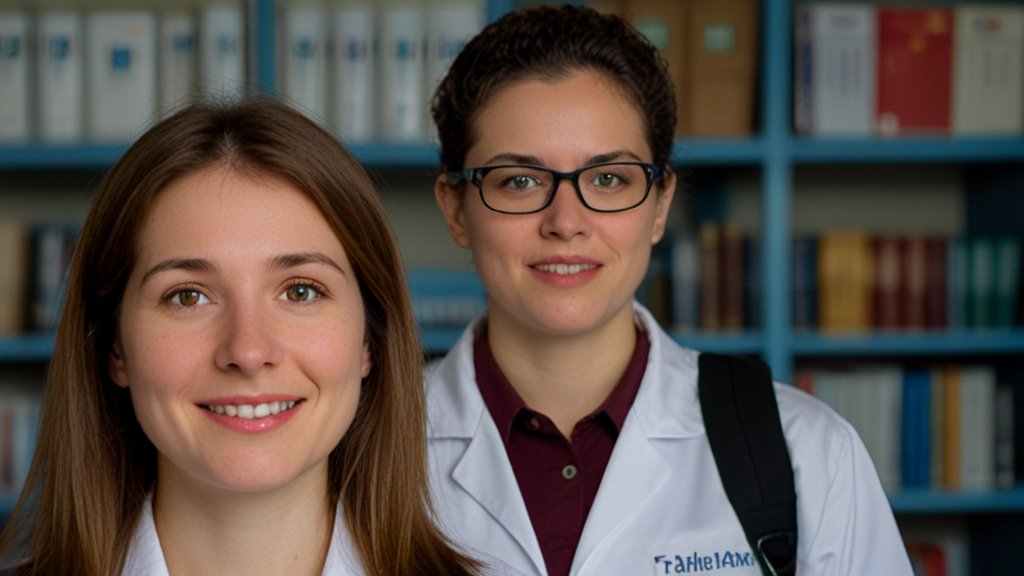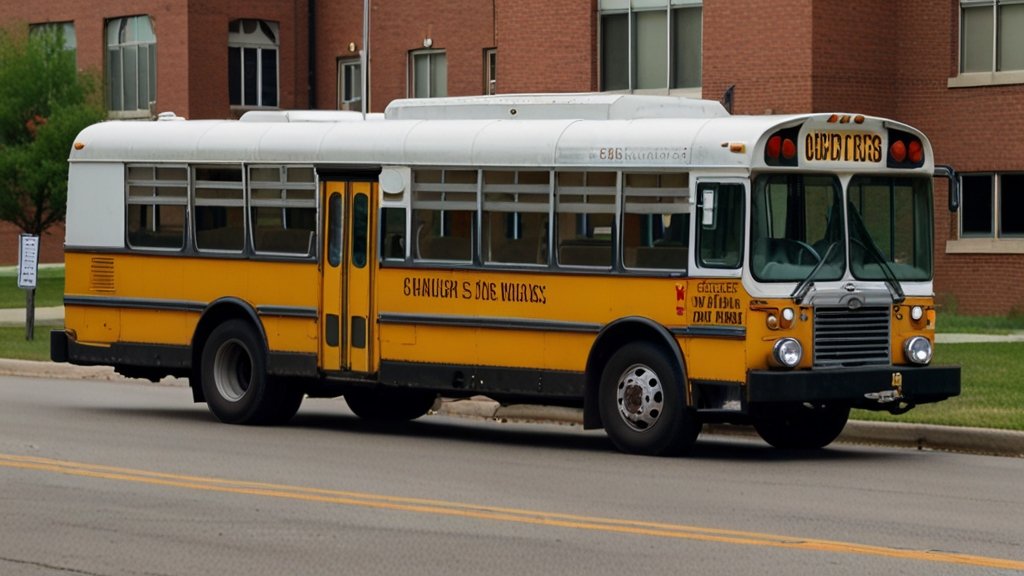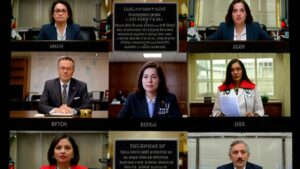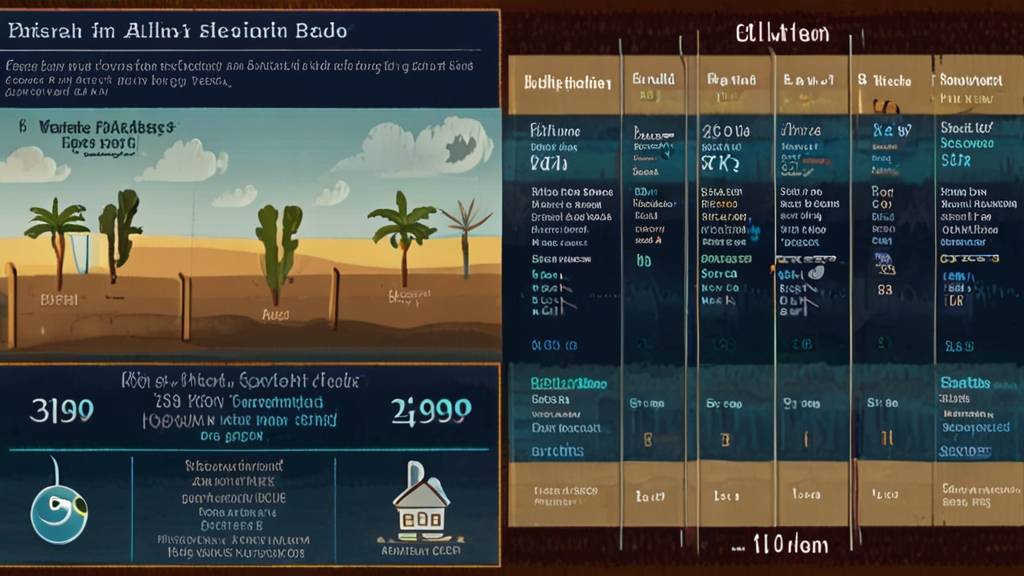
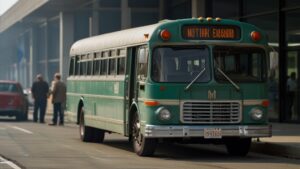 Heath Benefits & Funding
Heath Benefits & Funding
All right well let’s get to it shall we I’m very very excited that we will be hearing from three different representatives of health professional for healthy climate and um 350 is it just m then 350 thank you sorry about that um so we’re gonna hear today from Dr ltha suani Pini thank you sorry um Sita Velo and Dr Dan trano Dr leifa I will say and actually we’re going to get started with Dr leifa so coming up well thank you so much for having me here everybody um I think I spoke with your group like back in during the thick
of the pandemic to zoom um and at that time like we spoke about the health impact of climate change very broadly but today we’re going to zoom in on uh air quality and air pollution and climate change and how this all plays a role in our health um hopefully you can all hear me uh so when you know we think about climate um air pollution often what comes to mind is like very thick bodyy sloggy Skies where ples can’t take off you can’t see anything and something that happens in very far away places like India and
China uh but according to the Minnesota Pollution Control agency even in Minnesota air pollution is costing lives so as you can see here this is uh particular to the Twin Cities um but the full data shows that in the Twin Cities and in the Greater Minnesota region air pollution is U contributing to premature debts 10% of all that is quite a big number so we’ll do a little bit of terminology going with the nerd thing so um when you know most of our air pollution comes from burning fossil fuels and when we burn fossil fuels.
Representatives of Health Professionals for a Healthy Climate (HPHC) and MN350 presented about the health impacts of air pollution from transportation and how switching to zero emission electric school buses benefits children’s health. They also discussed upcoming funding opportunities to help bring an electric school bus to Ely. Presenters included: Dr. Laalitha Surapaneni, Assistant Professor at University of Minnesota Medical School Dr. Dan Trajano, Adjunct Professor at University of Minnesota & University of St. Thomas Sonita van der Leeuw, Transportation Organizer for MN350
There’s three big categories of pollutants that come up and um the EPA classifies these into three things so the first thing is criteria air pollutant and when you hear news about air pollution or hear about air quality this is what we’re uh talking about behind the genes is criteria air pollutants so the common ones you might hear about are particulate matter nitrous oxides um so SO2 that’s your sulfur dioxide or acid Rin um causing chemical and ground level O then of course we know about greenhouse gases
and there’s also 188 pollutants that the EPA classifies as Hazard air pollutants something like Mercury that would come out byting home so air pollution has been studied don’t be afraid of this slide there’s a lot of information on this but we’ll go through this uh air pollution has been studied now since the 1950s um and has been studied all over the world with shortterm and longterm effects so we have tons and tons of data um and unfortunately air pollution impacts virtually every single organ in
body so if you were to focus on the heart uh there’s you know risk of premature death from heart related issues high blood pressure heart failure hosital hospitalizations myocardial infection or heart attacks uh and atrial prolation or an abnormal heart rhythm so there’s an increased risk for all of these conditions but then there’s also a causal incidence uh with particulate matter that is 2.
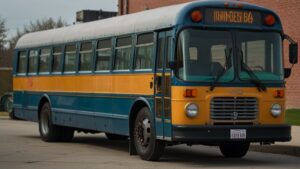
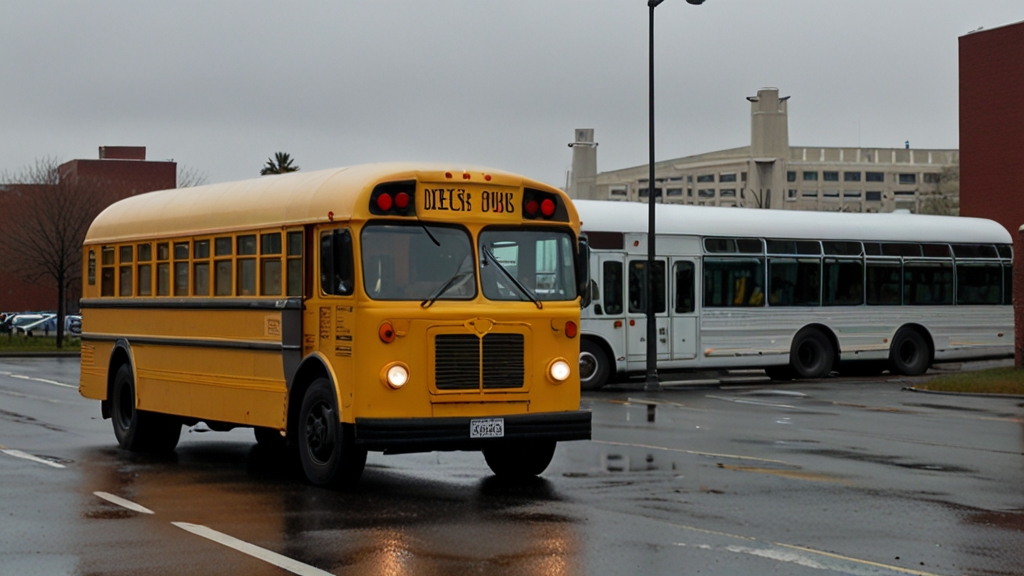
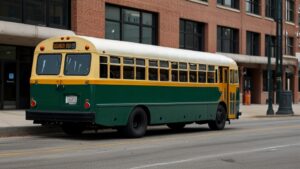
5 microns in size and cardiovascular uh related depths so um as you might all know causal evidence is the gold standard in medicine and to establish Lish that link we need a lot of data um to establish you know is it just a a correlation or causation is often what we talk about so we need a lot of data to uh establish this link um in a sense we can say you know just with so much certainty that cigarette smoking causes cancer we’re now able to say um you know air pollution uh causes death from cardiovascular issues now when it
comes to lungs there’s decreased lung function and children are especially impacted yeah I um children are especially imped and uh once again there’s a causal link to development of childhood Asma so not just kids with asthma who get a flar during air but actually new cases of childhood asthma U from air pollution um now lung cancer is now the second leading cause of of s air pollution is the second Le cause of lung cancer um if these cases have gone up as tobacco smoking is going down uh air pollution
related lung cancer is going up and most of the burden is in Southeast Asia um again there’s increased ER visits for ex patients pneumonia in children risk of type two diabetes impacts to brain health with stroke increases the Parkinson’s dementia anxiety and depression uh our kidneys are affected with carnic kidney disease risk um and terrifyingly uh particulate matter Cress the placenta and it can lead to campia which is um high blood pressure during pregnancy which in itself can have adverse outcomes for the fetus but then
we also see low birth rat preer birth still births and and there’s impacts to the development uh of the brain of theas and they can they’re measuring this like two years into the child’s life with language development skills and content connetion so this is all what we call um most of the times when we discuss air pollution and all of this we’re talking about ambient air pollution or outdoor air pollution but then there’s also air pollution that has happens indoors and uh the EPA has standards for outdoor air
pollution but none for indoor air pollution so you may have all seen in the news that there was this huge you know discussion about uh gas stoves and gas related pollution um so when we burn methane gas or natural gas indoors it creates the same pollution as it would when you burn it Outdoors so um during cooking and heating our homes you see high levels of uh nitrous oxide that can uh that has been linked to increased rates of asthma for children and U stunted lung growth like we saw as well as um respiratory infections that put
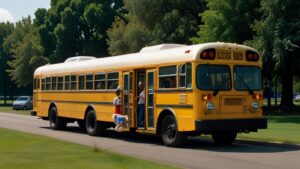
kids in the hospital um and in Minnesota we have uh wood burning which is a big source of air pollution uh the picture here comes the graph comes from like data from 2014 but there’s now 2015 data and um um that number has decreased to 55% of R uh pm2.5 but that’s still a pretty significant amount of uh potion and we just spoke about you know how much um how many organs are impacted by those par matter um as always with everything related to the environment the impacts that we just talked about are not
distributed evenly um so more than one Americans currently live in places that are unhealthy a and in Minnesota the likelihood of living next to a polluting facility is higher in communities of color and low communities and while the data is reported that way I just want to say that you know people don’t choose to live next to polluting facilities these facilities are often uh cited in these now um when we you know there’s a lot of these impacts but who is at most risk from this so as I practice at the U
ofm I you know see patients who are hospitalized often um related to Heart and Lung issues and so when I’m thinking about counseling them about air pollution risks I try to I try to C this through this framework which is um three main components that I think about so the first one is exposure right like who it going to to have the maximum amount of exposure so for example last year when um the Wildfire smoke was so high I had a patient who came in who um W Lawns and does like outdoor gardening work and so he would have a lot of exposure
because he’s uh then the second part is sensitivity so even uh if a healthy young person is exposed to Wildfire smoke they’re not automatically going into the ER right so like people who have underlying um you know medical conditions so my patient had underlying um cystic fibrosis so that’s a l condition that predisposes them or children elderly and uh pregnant women are at increased risk and then who has adaptive capacity so that’s another thing that I think about so adaptive capacity is anything that can decrease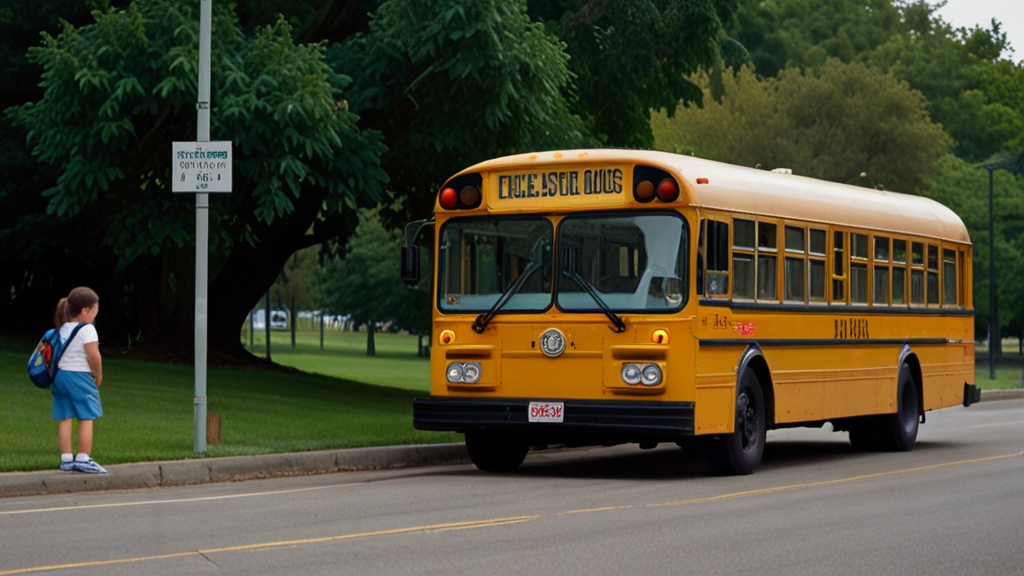
the risk from this exposure so you know can if they can work from home if they have an filter at home they’re really not exposing themselves to as much Wildfire smoke during the event um unfortunately my patient was wearing it a 95 mask but uh even despite taking all the precautions and he had an air filter at home despite all of that he ended up in the hospital but this is a bring to you know think about who’s at risk but also how can we protect ourselves and improve you know our adaptive capacity to uh save off those some of those heal
effects um climate change plays a role in air quality so in three different ways that we will talk about the first one is Ozone so we all know the good ozone which is up in the stratosphere the ozone layer but then when there’s um air pollution in on a hot day and those hotter days are getting more common because of climate change um the pollutants within that air react with each other and form a new chemical which is the ground level ozone and that is very uh harmful to lung health so on hot days we see that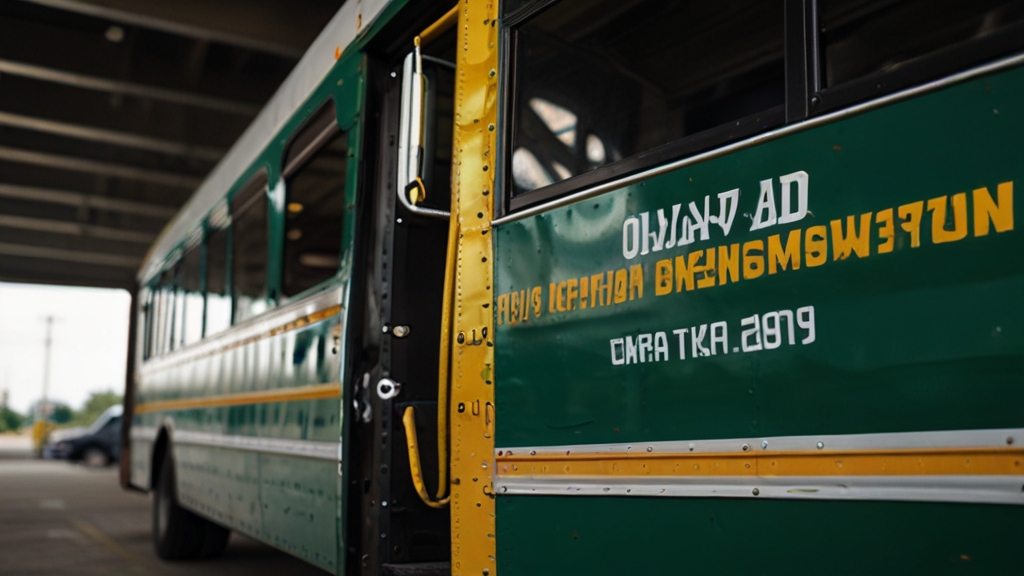
there’s higher rates of uh ER visits for asthma exacerbations or or UL CS for uh respiratory related problems um and you know you’re not in a city but because of wildfire smoke you can still see Oz forming um in areas where there’s not too much you know typically forms in urban heat islands where there’s a lot of like um traffic and there’s pollution there but because of all oural happening in outside of the Metro are the other big uh air quality impact from climate change is from Polland um
so we are already seeing that uh there’s a rise in the amount of pollen uh how early the pollen season starts and how long it’s lasting and so on the top what you can see on that see it so well uh on the screen but the pollen counts um is uh on the top and the pollen season start date is in the bottom yeah I don’t think you can see the map project onto there I’m sorry but you’ll have the slides of the H to you uh the other uh big way that our air quality be impacted is the Wildfire smoke so what’s in
Wildfire smoke often depends on what’s burning um what’s the temperature that it’s burning at and how far away are we from the source uh but typically you know it’s like what we get is the Canadian Ware smoke so the heavy metals as buses like those things uh don’t travel as far uh down south uh but what does travel is the particulate matter uh which causes a lot of these Health impacts we spoke about and unfortunately uh there’s early evidence to show that um the pm2.5 that comes from fire smoke.
Is more damaging than the pm2.5 that comes from burning fossil fuels um you can see here that there’s also things like Benzene which is linked to um leukemias and other impacts to our blood H and there’s nitrogen oxides which once again irritate our LS and need to increase rates of so these are all the documented impacts of uh wildare smoke uh once again you’ll see the similarity with like what we already talked about where there’s more pratal deaths there’s ER visits there’s um um lung and heart
issues pre-term births uh once again there’s environmental Injustice where black Americans are more exposed and also have higher rates of hospital admission from allire smoke um and there’s a lot of Health impacts that have been monetized and anywhere between 11 billion and 20 billion um in 20110 so but you can only imagine how much you know last year’s well virus smokes uh must have cost this so how do we protect ourselves from um wildfire smoke and this video uh there’s a video from the EPA that helped
uh that talks about setting up a clean air room so basically water room in the house where there’s no smoke so you know no wood fire no cigarette smoking no gas stove or anything like that and that room if you have if you can have an um hbac system in your house that’s great but even in that one room having a nv13 or above air filter um and having good V ventilation and then air conditioning in that room so that you can um spend most of the time in that room and limit your exposure to uh wild fire smoke and if you must go outside
wearing a 95 mask it doesn’t totally take away all the exposure but it reduces it uh significantly and of course we are all very familiar with monitoring air quality it’s now in most of our weather apps the aqi uh in places like California there all also doing this at a public policy level where they’re setting up clean air centers where people can just go stay there during the Wildfire smoke like Peak um but it’s becoming so common in uh California that they’re spending like several months exposed to smoke so not.
Sure how uh this is going to be a solution for uh but at least for the unhoused this would be an option because they have option um and then in Minneapolis uh we have an asthma program where if uh you have someone that’s you know 21 years or younger uh the city comes out to your house and helps you with um providing free air filters and uh they can help like you know change out the pillow mattress and other allergens in your house up cause at ASA so we need more of these programs so that we’re providing options so that you
know not everybody can get to the Clean Air room so helping provide those indivual Solutions and um as always I think as you talk about ad just transition it’s very important to think about how do we make sure that this this what policies were implementing benefits everybody uh because in the cities a lot of the air pollution exposure is determined by where you live and so you can’t really ask people to move uh when they have asthma that’s being figured by air pollution so how do we address that and
environmental Injustice and um we will be talking about electric school buses so hopefully that uh plays a role into cleaning up the air uh but then also thinking about workers and their health because with increasing welfare SM there will be more need for firefighters to be out there so how do we help them and their Heth yeah questions at the end we we should have a good amount of time I’ll I’ll try to get through some of this and I are going to talk about electric school buses I’m Dr Dan trano I’m actually a retired physician uh but
I I still teach part-time at the University Minnesota and the University of St Thomas and then on the board for health professionals refinement and do a lot of volunteer been focused on organizing around one opportunity a big opportunity that impacts both health and climate or climate pollution and health sort of come together uh and that is air quality on school buses for our kids and uh it’s been great to for the past three and a half years to see what has what’s happening in that space of school bus.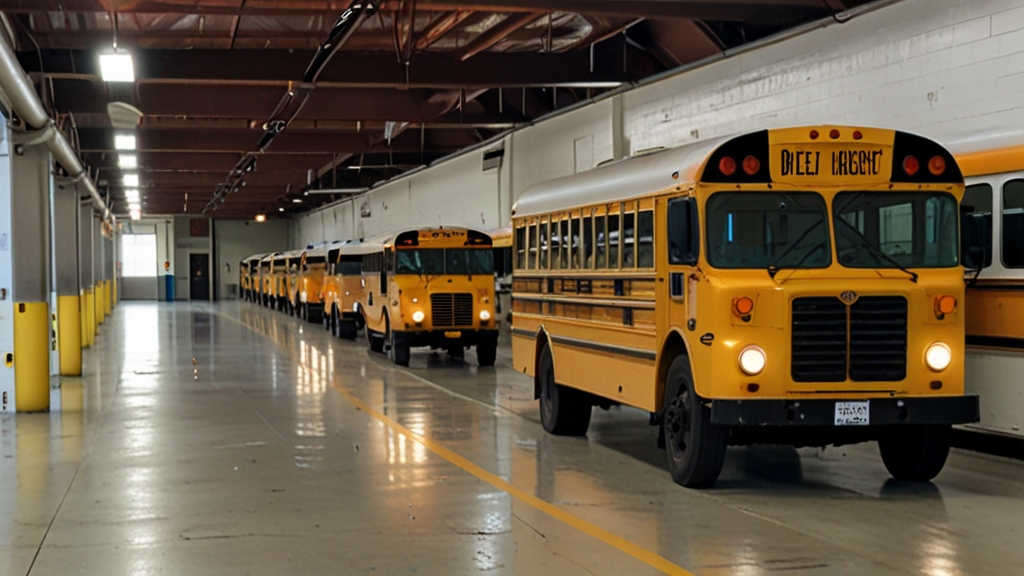
Transportation because now we have availability of the zero emission electric school buses where kids on those buses those buses have no tail pipe are not going to be exposed to any of all that air pollution that Lita is talking about um inside of uh electric school buses um because uh we know that those diesel emissions are really really harmful for kid health so um my contact information is here um a detailed slid set is there if you want to snap a picture with your phone on that QR code we’ll probably email out the
presentation as well um but uh if you are interested in in this topic especially reach out to me we’re looking for people organizing the communities to get our kids on saer transportation to school there’s a now is a great time right now there is a lot of funding available for Community us to get these school buses for their schools so need is going to talk a little more in detail about all of the funding uh nationally that’s available and a new funding Statewide that is also available for Minnesota that we’ve been involved with
um so I’ll tell you what uh what drove me to this right someone asked am 3 p they asked hey you know we’re done with the election campaign should we organize around something else to get people involved in a climate U climate uh topic and uh think rant Steven said s you know take a look at electric school buses would that be of interest to you I had no idea what that meant I didn’t know much about the technology or about the issue of diesel emissions or other fossil fuel emissions that kids were exposed to in school buses so I I took
my phys hand well let me take a look and see what kind of research is out there and what became really evident to me is that wow this is a children’s health issue as much as a climate issu both those things coming together was where I think I can really serve as a position and a climate Advocate um and it led to a lot of great things including um my wife Paula yours in the yell there and our friend Brooke um rooper who is now on Hopkins school board uh and her son CJ we all were able to testify at at the Minnesota house a.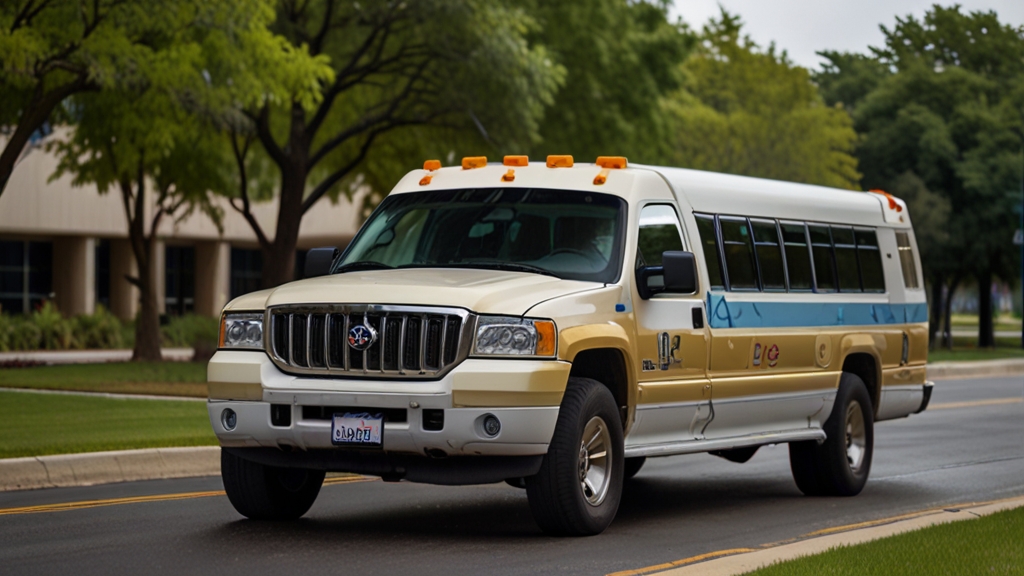
Couple years ago now and actually get $13 million of funding passed in that legislative session in um 202 three for specifically electric school buses in Minnesota and I’ll tell you what’s really compelling you know my wife and I are both retired doctors we’re not the most powerful people in this slide that testified that is Brooke and her son CJ uh at the house um they both have it as and Asthma is the number one chronic disease of children about know one well children Nationwide so if you’re sitting
on a school bus filled with you know 70 kids you know a good number of them likely have asthma and are being impacted by breathing all of that particular matter or or nitrous oxide that are coming from those engin and that was true for Brooke and CJ was in kindergarten at the time he didn’t ride the school bus regularly but he was on a field trip on a school bus and he is one that has been hospitalized and in the emergency room of asthma and when he came back home Brooke was just freaked out because he was not breathing right.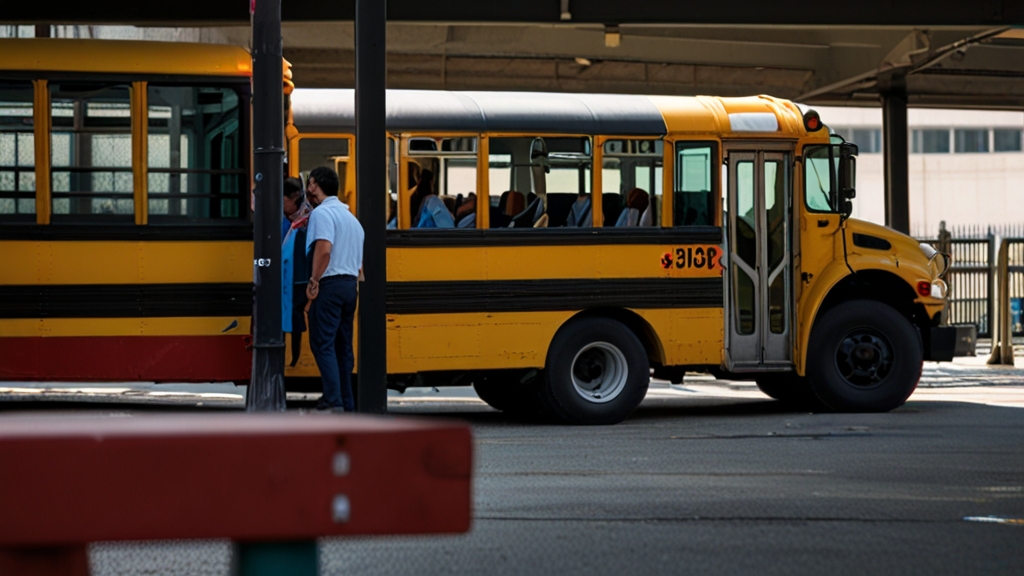
Um and she thought well that must be from riding on the bus does ride the bus regularly you know fortunately with three men at home and breathing better Air at home he didn’t have the year at that time but that is you know that kind of personal compelling story of why we want to do this now we have technology where you know kids don’t have to be exposed to anything inside that school bus and so Brooke is just a fierce advocate you know now on the school board probably because of this issue of trying to and we met with hop
Schoolboard now and hopefully they’ll start applying for funding for these buses so CJ when he’s riding on a bus doesn’t have be exposed to all of that stuff but CJ’s not the only one again one and 12 kids have asthma and uh so there are you know hundreds of thousands kids bus Minnesota that are potentially GNA have asthma and not have to be exposed to some of these mission so we have a handout in the back um this is our hbhd health professional our healthy climate handout there’s now5 billion well half of it’s already been
spent over the past couple years but there’s still2 and half billion dollars remaining in the bipartisan infrastructure law uh EPA clean School Bus program that can be given for schools to Electrify their school bus fleets um in some priority districts particularly rural remote districts or tribal districts or districts of a more significant poverty they can almost get a completely free paid for school bus with that uh other districts non priority um it probably paid for half of a brand new school bus uh for them uh so. The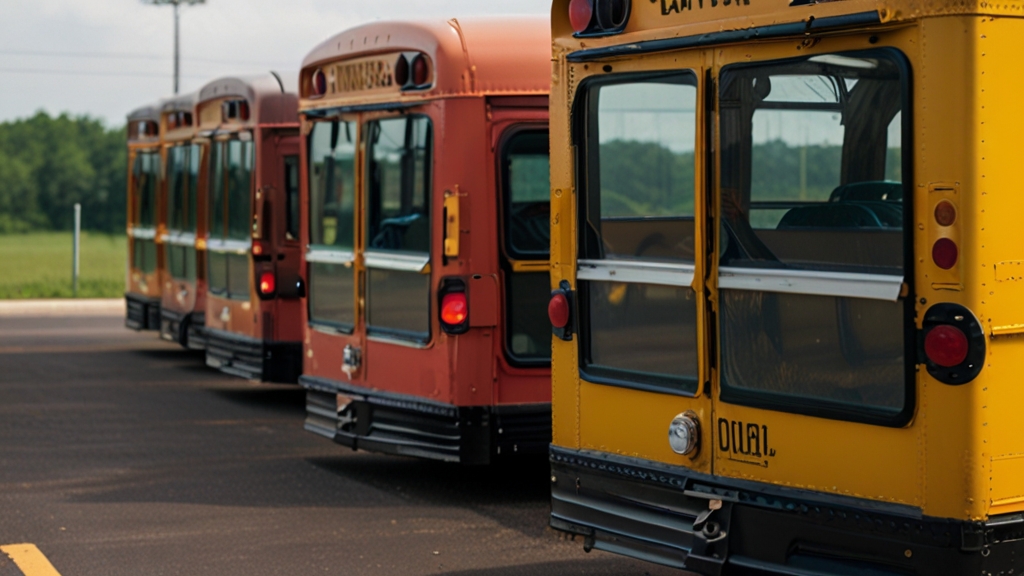
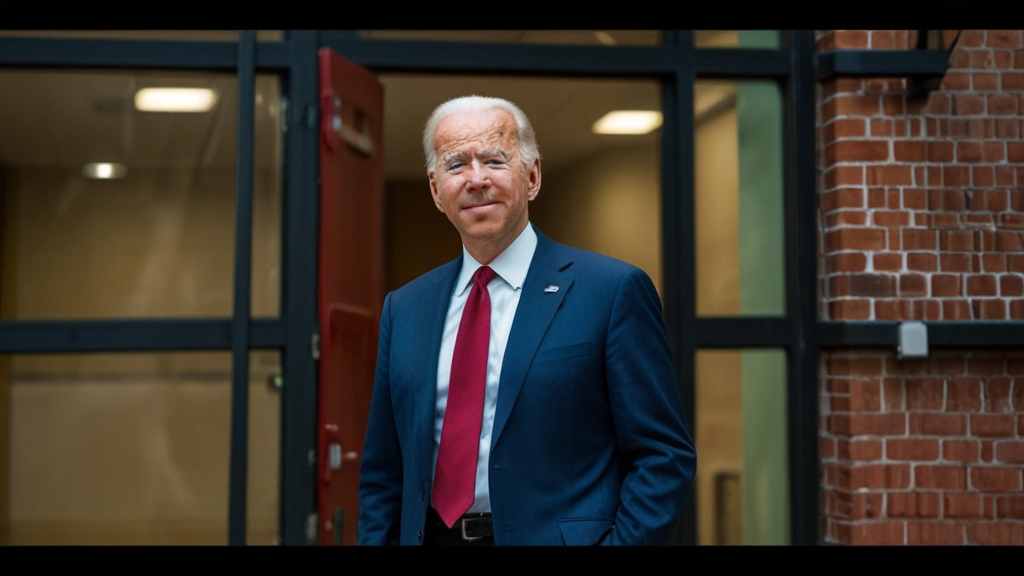
finances in many cases most cases if you get funding are probably going to look very good for your schools probably actually save them money on Transportation if you look at um how these buses actually save in terms of fueling costs compared to charging it up on electric compared to having you buy diesel fuel uh how they save on maintenance because you know much fewer moving Parts they don’t break down there’s no oil changes involved um so the finances probably going to work out very positively if some a school applies for
and gets some funding for these for these school buses um but the health benefits are are huge and the climate benefits as well um so what we do know is that there’s a lot of interest out there in Minnesota and there’s not enough funding and that’s why we want to legislator say we we need funding for these things people are interested in getting these things we’ve had um school districts throughout Minnesota apply for over 225 buses either through the the federal program or through the state uh
Volkswagen settlements the npca had a program um but only 33 uh School Bus grants and rebates have been awarded to Minnesota schools so a lot of schools want these buses there’s just not enough available funding uh and one of those programs is rebate Lottery if you don’t apply you don’t get a ticket to potentially get funding um uh and others are Grant programs we have to write competitive grants and why our school district May deserve these these money these monies for school buses um this slide you maybe can’t read in the back
but uh you can look at the slide said this is sort of a summary of what I found when I did that research but why should I organize around electri schol buses we actually two very compelling studies randomized studies showing that kids who are riding in buses that have less diesel emission exposure compared to older school buses do better on their health uh attend school more often and do better on their uh academic test score outcomes two very very compelling randomized studies looking at these kids that are exposed to less diesel.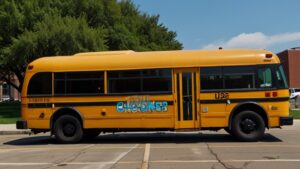
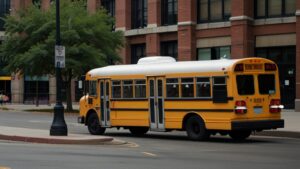
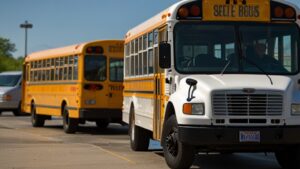

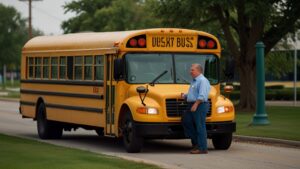

Emissions um have better school tant by about 8% this was a study down in Washington state they have better um lung function tests actual spirometry lung function test they can they can move more air in and out they have less exhale nitric oxide which is an inflammatory test of the lungs asthma is an inflammatory disease and those uh kids attended School of Mor often especially those kids who had underlying as uh the other study was done in Georgia they did testing on their academic tests significantly better uh English language
arts scores um and then uh better but not a to a statistical um degree um math scores and they do their aerobic fitness testing those kids that were in in those buses not exposed to as many diesel fumes did better on their run and lock Fitness tests their aerobic capacity was better so when I read those studies I said yeah Grant we should organize around this and get more of our kids in Minnesota on uh electric zero Mission school buses and then the funding has come during that time uh that really make it make economic sense for schools
to do this and we uh see schools across the United States taking advantage this in some ways more than Minnesota schools we’re trying to get the word out in Minnesota and if you are interested in organizing with us please reach out to me or s or any of us and then you know climate um is is huge right and I hope I’m talking to a lot of you that understand that um you know the World Health Organization the CDC we all recognize the medical community all recognizes that when you look at climate change it
is the biggest threat to to human health that we face right and I you know you listen to L yeah it is uh and you know this is this is this is right inside of all the medical literature New England Journal the Lance said we all know this we just need to act um and uh a school bus over its lifetime will will um emit 90 tons of carbon um and once we get to zero emission school buses across the US that’s 5.
3 million tons of carbon that won’t be released in the atmosphere every year 5.3 million right they talk about carbon capture you know maybe 100,000 tons of carbon in this new carbon capture technology 5.3 million tons uh of less carbon once we get our us Fleet electrified so it’s it’s significant uh and um school buses are probably one of the first things we should really think about electricy that’s I think that’s why Congress Byars and way put put out 5 billion dollar uh this is about the economics you know the the there’s
funding might cover a lot of that um they are they do cost more um you know a electric School Bus May cost $400,000 versus a diesel bus which is about 130 what I talked to Nick Martini one of the school transportation folks um but uh the funding will cover a lot of that if you could get a grant or a rebate uh but the fuel and maintenance costs and this is real life experience we talked to our Michigan colleagues L we’re seeing between $4 and $1,000 of savings in fuel and maintenance cost every year for electric School Bus
versus their their diesel bus um and then really cool because this can be used to support the grid and we’re seeing this done in several school districts now where in the summertime school buses aren’t being used but they use that battery as an asset um to uh plug into the grid so they can store that battery charge that battery up overnight when there’s low demand and then when the peak demand comes when people have to turn on their natural gas or coal peer plants they can actually use the bus battery instead to feed to.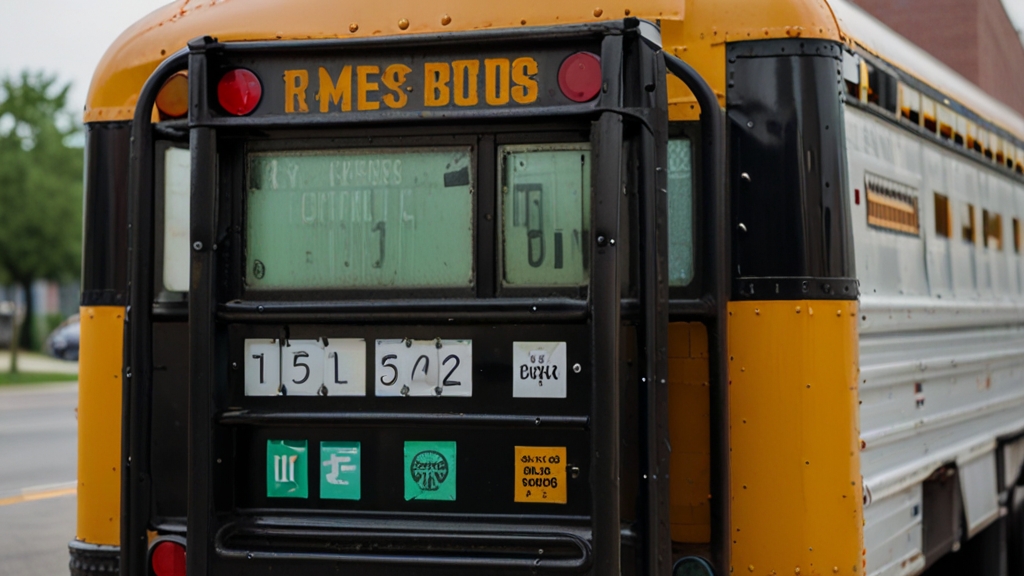
The grid to cover some of that uh that high cost demand and in um they they did the pilot in um Massachusetts for two years they were earning with the electric utility company almost $122,000 per bus per summmer to sell that Peak demand back because it’s really expensive energy to turn on a peaker so there you know if you can actually s and actually uh Excel down you know is’s going to be piloting this in that upcoming year with a couple of school buses so this is reality today in some states it will be reality um in the
upcoming year with Excel and I don’t you guys Minnesota power up here or what is it mix yeah it may be a great discussion to have with the utility company um hey this works could we begin to do that if we got an electric schol bus up here um so there are some calculators on you know total cost ownership and uh uh your school leaders can go through that hey if we get a grant or something what will that cost us for a school bus compared to a diesel bus um you know here’s a case where you know nonpr District out.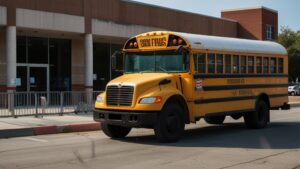
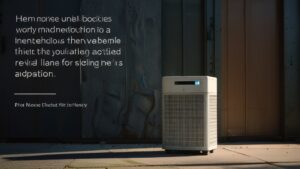


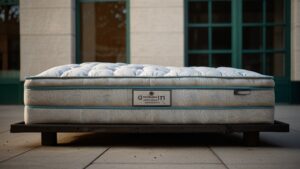
Some money over the lifetime of USS 12 13 14 years it’s going to cost less The Upfront costs are going to be higher maybe covered by some grant funding uh but when you look at the fuel and maintenance savings it’s going to cost less and then you know a lot there’s a lot of propane people out there saying oh you know propane’s okay why just switch to propane uh actually a has more um carbon impact on the climate change than than a diesel bus maybe a little better in terms of nitric oxide or or
parate matter a little bit less but it has more carbon carbon monoxide and carbon dioxide coming out of those things which are damaging to the brain as well so I wouldn’t go to propane kind of like going to a bom Max from VHS I I would I and the funding is not as great for funding for electric is is much so we’re looking for organizers we organized we’ve been to school board meetings we’ve been to the legislature um we help people do that uh what I really love is when we get young people involved and we’ve help several.
Students go to their school board successfully and uh and so these are folks in Rose B apple b Ean those two students they went school board and then the school board said yeah we’re going to apply for six buses these are folks in they went to the school board School Board a couple weeks said yep we’re going to apply for a couple buses in ad uh s and I went to Minneapolis um they actually um are purchasing four buses uh and that came about after our Schoolboard meeting with them the fifth grade class one of the fifth grade uh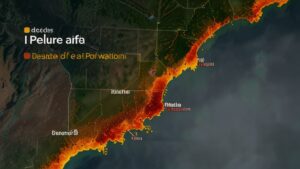

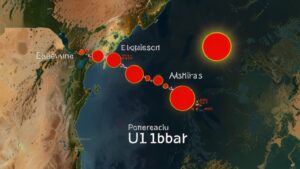

teachers was teaching about climate change he had the fifth graders right to the school administration saying hey we know about these electric school buses and we’re worried about climate change can you I think that was those young people are the ones that sort of convince Minneapolis say yeah we’re going to get four buses we got two funded and we’re going to buy two out them which is great for students Health great for the clate great for U students advocate so if you know students anywhere in this area that want toate. We
are here to help them and I do have a tool kit U with all sorts of presentations antles and emails to school board members and and other resources I’m s going to kind of go through the funding and then we’ll take the size no thank you so much yeah awesome so great to be here with all of you all with you all today um I will try and talk a little bit quicker just so we can get to if you any of you have questions would love to address those um but really quick uh for a quick introduction my name is Sita vandu I use she her
pronouns and work for m350 which is an environmental um advocacy group that we are based in Minneapolis but work throughout the state and I’m so excited to be here up in elely uh I haven’t been here since I was like eight so first time work in a while which I’m really excited about and I was also so excited Chocolate Moose is still here which I also really enjoyed um but so yeah I am their transportation organizer so with that means is I get to um help organize with Incredible people um that you’ve
just heard from additionally with other um organizations coalitions um and really just trying to bring everyone together surrounding how can we get electric school buses in Minnesota and kind of figuring out those um figuring out those power points and sort of like where are the hot spots how can we make this happen so um I’m just going to give a quick overview of sort of what’s already happened in Minnesota I don’t know if many folks know this but Minnesota was actually the first uh state in the entire Midwest to get an
electric School Bus this was back in 2017 it was in Lakeville and this bus today is still running it is still operating um which is really exciting for multiple reasons um one being you know we’ve had some pretty uh extreme winter since then and additionally um as time moves on um more and more studies also we can use this bus to be able say hey it works you know this is how it works after 5 years after 10 years um using as a tool and then in 2022 that is when the federal uh funding started to trickle through um back in
2021 the Biden administration had passed an infrastructure Investments and jobs act which was the first large act taken uh you know at a federal level around climate change this funded a bunch of fantastic different um programs including the clean School Bus program which will be taking five bill5 billion doll and to spread that across five fiscal years so basically 1 billion per fiscal year or I like to reference them as rounds um and so in 2022 Minnesota only submitted 30 applications and we only got three buses um but since then
you know we’ve really been picking up our feet and I joined MN 350 right after the um first rebate round Clos um and so kind of got to see okay here’s where Minnesota stepped up here’s where un fortunately we weren’t being a leader you know this wasn’t being taken seriously the school districts didn’t know about it and so going into 2023 um with the legislative session um we had just gotten the dfl trifect up and so this was a great opportunity for movement organizations across the state
and across multiple issues to get funding secured and that is exactly what we did um like Dan had just mentioned we were able to Advocate organize and get a $13 million electric School Bus grant program that’s going to be deployed through the Department of Commerce and this program could bring Minnesota up to 30 electric school buses and we have made sure that this program as is as inclusive as possible and making sure that all communities are able to apply for this and also the one difference between this program and the fen program
is we’re not competing with the entire United States we are just in our home state and so this will be a great way hopefully that will roll out throughout this year um and get our students you know on these buses and then this year um there’s a bunch of different programs that are available I already touched on the Department of Commerce program and so I’m just going to jump down to these are all the state programs so lots of options going on this year it’s a big year for electric school buses the
Minnesota Pollution Control agency um they have money through their Volkswagen settlement and over the last um two kind of phases for them they um have had the opportunity to fund electric school buses and our Coalition basically submitted a letter when they were crafting the Final Phase of this funding and said hey we need electric school buses and we also need funding for charging infrastructure um and in their draft plan they will be having um 2.
1 million going to Electric school buses and then 2.1 million for EV charging stations which is something that’s also super important you know if we get all these buses that’s a amazing um but we want to make sure that they are being supported and able to be charged and run the full-time um and also that’s when it’s really important to Loop in utilities and make sure that coordination is happening um so then the grid is reliable and this has worked in multiple other cities um and other states across the United States and then
finally with Excel speaking of um speaking of utilities they have their um pilot vehicle to grid um program that will have two electric school buses um and this is kind of we had advocated for more but this is sort of looked at as an opportunity for Excel to really test their vtg uh technology and then expand it from there so long story short this is a very exciting year for electric school buses and that’s why it is so important that we are organizing and getting people um involved and excited about it while it’s
available and right now actually there is a program available called the clean heavyduty vehicles grant program that is $1 billion that will be going for towards um medium and heavy duty vehicles and school buses are included in this that will be closing on July 25th and this is a program that um school districts can apply to or the bus contractor um and this is something that you know I’d be more than happy to kind of talk through and I have a handout in the back that kind of breaks this down a little bit more um be more than happy to
talk to people about this upcoming program um and the additional ones that are to come and then my final slide is n it’s more about that but my final slide is um that you have the power to create change I was really excited even hearing all of your community announcements because I was like man this group knows how to organize you guys have so many different events going on and so I know I don’t need to go too much into how to make these things happen but like um you know has been mentioned already in this
presentation um it’s a really exciting opportunity but it’s going to take all of us to do it um and even if it starts with that initial conversation with either a school board member or your superintendent or if you know someone at the bus company or even your neighbor um you know I know that I I don’t ride a school bus but I have school buses running through my neighborhood every day I used to take walks and I would avoid the blocks where they would idle um so this is an issue that impacts all of us and again it will take all of us
to do so so anyway apologies for the fast uh Pace but would love to leave a little time for questions so thank you so much wow I’m just feeling a lot of gratitude right now we get to come together every week and learn from people like these very intelligent professionals um who came all this way to educate us so cool car you have a question hi thank you so much this is wonderful um two questions what’s the 350 about yeah that is a great question should have touched on that um the 350 is 350 parts per million and that is
that’s a part of a national group um where it’s the 350 movement um is 350.org and then Minnesota is just the we’re like the CR Club where we have chapters I remember yes no problem um El has propane buses can you tell us are they better than diesel how much better how you know how how good or bad are they uh you know I think like I said is beta Max better than BHS um I I personally don’t think they are one actually they’re worse if you look at the data from a climate change perspective much greenhouse gas they’re
emitting really they’re they’re slightly worse um so it’s a mix bag they’re somewhat better in terms of maybe to PM 2.5 the small particular matter I think they would say on the short run tests that they’re better on nitric oxide all do long run tests on that my wife Paul actually did read the research studies really closely um but they are worse in terms of carbon monoxide carbon dioxide which those things impact your brain as you you know come poisoning so I you know yeah it’s slightly better than a diesel bus maybe
it’s not too bad that you have propane versus diesel but if you’re going to get new buses I would bypass the betamax and go right to the Netflix I would and the funding is so much higher for electric School Bus yeah and I think uh with with electric as well but like for all of them comparing the life cycle impacts is very important so if we’re doing propane we’re still relying on the entire fossil fuel um you know infrastructure and life cycle I have a p out that’s on here so I’m gonna give
them my and I’m gonna pass this along I’m just going to say quick um if you are super nerdy I brought with me a copy of there is an advocacy Agency for propane PC and they did a study at the University of um West Virginia and I have the actual data which is wonderful to look at because they will of course cherry-pick things out of it and say hey propane is better than diesel um and they put a lot of money into that message so it really gets out there I hear that from people but that’s why I bring the copy of the actual data with
me sometimes so you want to look at actually like um how much carbon monoxide is comes out of the engine every mile it can be uh up you know it can even be over three grams of carbon monoxide from the propane bus and it was also interesting looking at the study in that they would do nonre life scenarios like a 2-minute route or a f minute route because I think they were thinking it would look better if the engine wasn’t running very hot um so it’s just very interesting look at and if you want to ke out with me um we can look at
that thank you this is I mean is the Minnesota’s electric grid up to sff to you know be able to charge all these electric buses or we need some work in that area before we can um start talking electric school buses across the state or whatever yeah I I mean we have few of these right now I wouldn’t worry about getting a 100 more I personally um you know I think you have to look at the grid and work with the utility company on what infrastructure you need because sometimes you’ll need a diff upgrade on
a Transformer or something to carry that particularly if they’re going to get these really fast Chargers for their school buses although a lot of a lot of school buses are operating just on level two the median charge um and can be charged almost fully you know overnight so I think the grid the grid question is is a is a good one um however you know like I was shing with the vehicle grid I support the Grid in the summer and then most often um you know you charge most of it overnight on low demand when the
grid is not being stressed uh now some longer routes they might want to top off midday uh and there might be some some stress on the grid if you have you know thousands of electric buses that are topping off M day I wouldn’t wor I I’m I’m not I’m not electric engineer but in terms of the low demand energy at night I don’t think that’s where we worri about the grid and that’s when most of that charging occurs on school buses and electric vehicles in general we charge our electric vehicle
overnight low cost rate same thing would be for a school bus low cost rate overnight because the utility knows it’s not it’s not stressing the grid we want people at charge overnight at half the rate and that’s how you get a lot of that savings so great question about the grid right um when you talk about effects of uh like cigarette smoke secondhand smoke or even inhaling from a forest fire when you were kids is that all cumulative in your lungs or do the lungs get rid of that or say you were supposed to secondhand smoke as a
youngster you haven’t smoked and now there you know you go to bars they don’t smoke do your lungs have that damage forever or is it a really great question and so for air pollution uh because so much of the um you know vehicular air pollution let’s say and like you grow up your kid growing up next to a highway or something so then you have that exposure constantly and so those kids you see that their lung uh function is low and that can carry into young adulthood but when um the kids move away from the area
of of pollution there’s um at least like their asthma rates and Asthma exacerbations and so on like go down uh for Wildfire smoke though there’s not data yet um they have shown that kids um the the lung inflammation seems to improve once the Wildfire smoke exposure goes away but because in places like California the exposure now is like months and then it’s persistent every year so they’re doing a long-term study in California trying to figure that out for children’s health and then quick going back to the
buses uh the the kids obviously doing better the data shows that I I can understand they’re not polluting into the atmosphere is isn’t getting sucked into the bus is it recirculated air though or how come the all the exhaust from the trucks they’re following and so forth doesn’t get sucked into the Through the Windows um or is it just not we those folks from Michigan a while back uh and you know part if open it’s actually worse um because stuff is coming in um and you know the way they did the study
in Michigan was they actually had a um they looked at air quality inside inside the bus and inside a car in front um so I don’t know the the answer to your question is um there’s a lot there there’s a lot more particular matter and poor air quality inside the bus than a car riding or there done cars riding to the side too um where it comes from it’s got to be coming from that engine I would think um and so I don’t do you have any other yeah thought I think the older diesel bus model uh the
diesel exhaust would concentrate inside the bus and so there’s filters now so that some of that pollution is being cut out so the 2006 uh model is like what when we talk to the researchers they said anything after 2006 those buses have uh better air quality uh in inside the bus but again it’s not the same um as a Zer Plus um I was I was wondering about um Mr so I’m curious you talk about the grid what what sort of range do these have because of course kids travel long distances here for various events and so
on yeah definitely that’s a great question question um right now and like I mentioned in the past um or not literally five minutes ago that we also work with a lot of different bus uh people who work at different bus companies um and what I’ve heard is it can range from about average of 120 miles to 140 um and I know that also usually when a district is first starting an electric school bus um whoever is providing the bus and between the transportation director usually usually they’ll start them on the
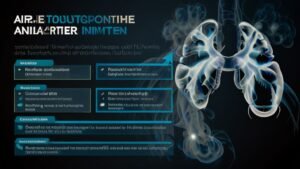

shorter routes um just to make sure those work um but however you know depending on you know they could either do multiple shorter routes or maybe you know medium uh medium level routes um but it’s over a 100 um across the board and second question um I may be imagining this but I um recall that hydrogen is also a potential source of fuel for buses am I imagining that or is that just too experimental at this point no it’s hydrogen is is working on particular in California I think they have hydrogen Vehicles out there and I
again I’m not I’m not a deep expert on this but the challenge with hydrogen is it takes a lot of fossil fuel to make the hydrogen right so the greenhouse gas impact I think it might even be worse but uh you know if you can make green hydrogen you know do you do you know that hydrogen stud so um bil climate group has a great presentation on this that b did there’s like 10 different kinds of hydrogen so it’s really hard to say anything definitive about hydrogen but if you want clean hydrogen you have to use a
buttload of green energy if you want pink if you want pink hydrogen that’s nuclear power making hydrogen using electrolyzers but the 99% of the hydrogen that’s available now is natural gas where they just strip out the carbon dioxide and bent it to the atmosphere and then they have hydrogen so it’s extremely uh energy intensive to produce and it comes with a huge amount of vented CO2 and I think maybe a little methan so uh generally hydrogen’s not so clean and we’re working on it but uh hydrogen uh in the best case is a poor
storage medium for clean energy you you’d be better to just use the energy and not turn it into hydrogen and have a bunch of wasted energy in the process of converting it to hydrogen then converting it back yeah from a greenhouse gas emission from a zero emission if if kids are riding in a bus no tail right or it’s just dripping water instead of PM 2.
5S into the bus probably better from a health standpoint on that s but the downside is the energy this may have related a couple other questions but is if it deals with the grant SEL ction is there enough grants being awarded to get a sense of of what the merits are to end up getting a grant or ending up on a waiting list or or that sort of thing they trying to get the most use for the award which might be one way to look at it depending on where the school district is and and I don’t know if it’s related to that or not is
there any difference between whether the school district is operating the buses or they’re Contracting out the bus services to and I don’t know what the relative amount of use be but it might be greater or lesser yeah that’s a great question um so to First sort of answer the first question that you had um Dan had a slide up that um I think we’ll be sending the slide deck to you all of how many uh school districts um are interested um and it was much larger than the amount that were awarded um and this is
something that we are working on you know every time these programs come out of trying to make them as inclusive as possible um and it’s also you know five billion feels like a very big number um but about a school bus can cost around 400,000 um and so that’s for one school bus and then once you’re adding that so that’s why we’ve been really advocating for these state funded programs um therefore they’re less competitive and then also some sometimes um it’s easier you know for people to say oh well this
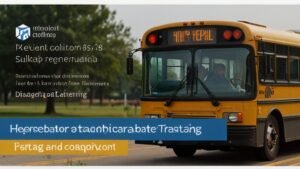
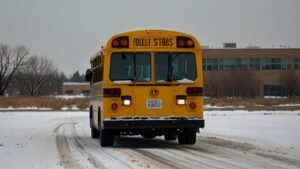
came straight from like our home state um and additionally too to answer the second question um yes there is a difference usually in the fir one of the first things that I think I hear and multiple of us here we’re telling people hey you want to Electrify your school bus fleet they quickly go oh we don’t own our buses and we have to follow up with that’s okay um you know the bus contractor can apply they’re allowed to apply in all of these applications there’s a third party applicant um and
bus contractors are eligible under that um all that is needed is just basically a consent form between the school district and the bus contractor saying you know we consent to knowing this is happening so it’s a very easy step however that is one that tends to block a lot of people um and also makes it so they don’t want to do that extra step of coordinating um Red Lake actually is getting um four electric school buses in August um which is very exciting um we’re hoping actually to yeah go up there and celebrate them um but they
also do own their buses which did make this application process easier um but also this isn’t to say that it’s impossible to do it if you don’t because uh Minneapolis um they don’t own their buses they were able to get their buses um multiple other school districts are the same so wonderful I’m INE we got two last questions or remarks before we’ll wrap up at the beginning of Co there was a natural experiment that happened uh when everybody stayed home and the freeways were empty and the air was clean uh and
I actually heard that the death rates from uh various pneumonias and and problems that people have because of air pollution went way way down uh and I just thought that that was just a remarkable um event that I I heard public publicized very much thank you for reminding us of what we’ve learned this is just a great presentation you had hopefully I can go this afternoon I really appreciated the fire you had there uh electric versus diesel versus propan looking through all the different brur There’s real no
definition or explanation on passenger size or the buses and so I was curious because I don’t know what El needs but you know there are small vanik buses and there buses that take what 40 60 kids I don’t know do you have any info on that I think it’s based on weight and then you know the EPA clean School Bus program they have different funding amounts for the different size buses uh and they fund um anything from the really the biggest bus school buses you make to some of the smaller ones but the
funding will be different depending upon the class and the size and if you go to the EPA clean School Bus program website they’ll kind of show you a chart of the different classes of buses from the small ones to the large ones and how much funding they give so there is funding available for all all sizes yeah and also give a shout out to Paula for making that handout all of you.
